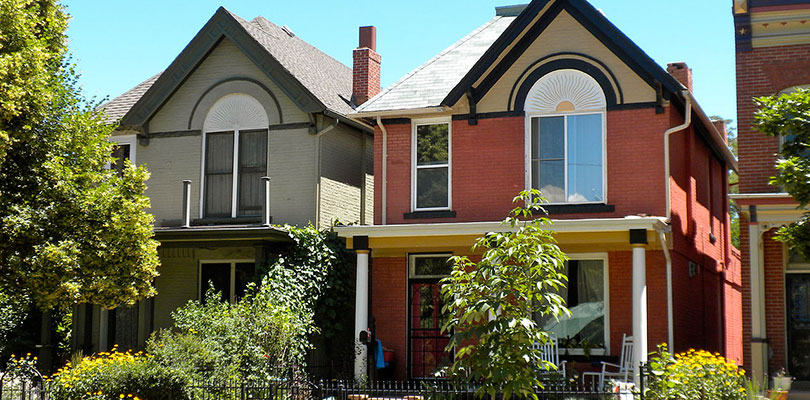The West Highland neighborhood includes the northwestern part of what was the incorporated Town of Highlands. From its beginning as an elite suburb of the “unsavory” city of Denver in 1875, the town expanded until its boundaries stretched north from Colfax Avenue to 38th Avenue and west from Zuni Street to Sheridan Boulevard. By 1890, there were 35 subdivision developments in addition to the original Highland Park.
As the population of the town grew, it did not remain as exclusively wealthy as its original planners had intended. Many of the subdivisions allowed small homes to be built on 25-foot lots. However, the town did remain residential and the housing was primarily owner-occupied, with great pride shown by the owners.
In 1890, Elitch Gardens, part of a private estate in the northwest corner of the town, opened to the public as a zoological garden with free vaudeville acts. Under the operation of Mary Elitch, a theater was opened and picnic facilities were provided. From World War I until 1995, when it relocated to the Platte Valley, Elitch Gardens was known as one of the major amusement parks of the region and the neighborhood’s best-known attraction. In 1978, the Elitch Theatre was added to the National Register of Historic Places.
Denver first tried to annex the Town of Highlands in the 1880s, but the people voted it down, not wanting to become part of the “dirty, sinful city” they looked down upon. However, transportation from the town to Denver across the river was inadequate, and many wealthy Highlands residents found the Capitol Hill area in Denver more convenient and moved out of Highlands. Finally, in 1896, the population of 8,000 voted to annex to Denver, and the promised construction of viaducts across the river helped resolve the transportation problems.
In the 1890s, large numbers of Irish, German, and English immigrants came to the area. Later, many Italians arrived and formed a colony in the neighborhood. A large-scale influx of Chicanos began in the 1960s, but has been slowed recently by the influx of young Anglo couples and families.



